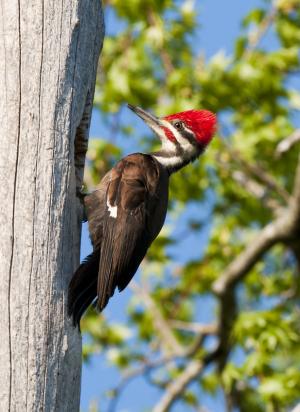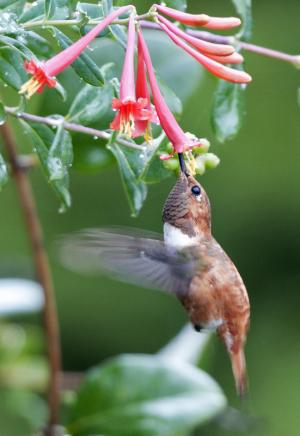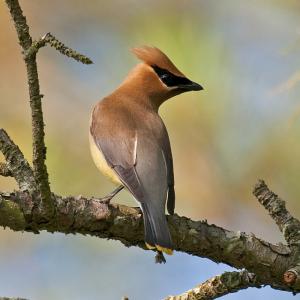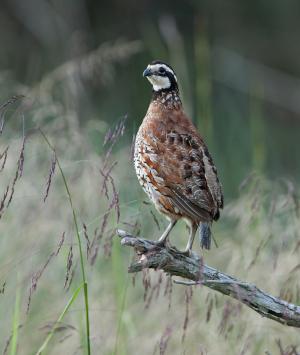Chuck Fullmer: Capturing incredible bird photos close to home
Chuck Fullmer says he backed into photography to support his love of birding. He wanted a better way to identify the birds he had seen.
Fast forward a few decades, and Fullmer has fine-tuned his skills in both passions to become one of the area's best bird photographers.
Looking over the multitude of his bird photographs, it's amazing to learn that Fullmer has taken nearly every one of them not far from his Georgetown home. And since moving to rural Georgetown from Lewes seven years ago, he has created a backyard habitat specifically to attract birds.
He specializes in woodland and grassland birds. “I really haven't made it out to the coastline yet. That's an area I haven't touched,” he said.
But that doesn't mean he won't make the trek to the ocean side of Sussex County. On Nov. 30 near the Lifesaving Station along Route 1 he photographed a snowy owl. He had his Nikon and 600mm lens on a tripod set up and ready as the sun rose over the dunes. It was a rare time when the light, subject and surroundings all came together.
“It was one of those moments to see a species I had never seen before,” he said. By the time he left, 15 other birders and photographers had arrived.
One of his snowy owl photos won a prize in the November-December issue of Birdwatching magazine.
Although he's been interested in birding and photography for decades, most of his photography has been done over the past 10 years. “Since the kids have left the nest, I've had more time and been able to ramp it up,” he said, not realizing he had used a bird metaphor.
Purple martins and hummingbirds
Fullmer also maintains purple martin houses. He first learned about the birds and their unique houses reading a 1970 story in “Boy's Life” magazine. His mega-colony at his business, Pontoon Express along Route 5, has 74 compartments housing about 150 birds. The migratory birds stay in the area from April to August.
Fullmer's hummingbird photographs are fascinating; but he has a secret. From April to September more than 20 hummingbird feeders in the Fullmer's backyard create a mecca the tiny birds can't resist. For photographs, he says, he literally walks out the back door when the light is right and starts shooting. Plants and flowers also attract birds to the backyard.
The habitat is so popular with hummingbirds, the National Institute of Bird Banding comes to the Fullmers six or seven times a year to capture and band the birds.
He also has seed feeders and hangs deer suet on trees to attract birds such as woodpeckers.
It's all about the glass
And how does he capture those detailed colorful images?
Fullmer said a few of his photographs are nothing more than being in the right place at the right time, but the vast majority have required research, planning and hiking into marshes and woods to find the birds' habitats.
Last weekend, he set up a blind along a pond near Harbeson to capture photographs of colorful wood ducks and hooded mergansers. Using intel from the property owner, he knew to be there before dawn to get ready.
“It's all about the glass,” he says referring to the lenses he uses to capture extreme close-ups with tight focus. He said it became apparent when he first started that even a 300mm lens was not enough. He moved up the ladder to a 200-400mm lens, then a 500mm lens and eventually to a long 600m lens. “Even with that I still have to get within 30 feet to photograph a small bird,” he said.
That all-important 600mm lens can cost in the $10,000 range.
He's also developed the art of camouflage using a variety of blinds and netting to conceal himself.
In addition, Fullmer sometimes uses pre-recorded audio calls to attract certain species and because he has lost some upper-level hearing he uses specially designed headphones that allow him to hear bird sounds. “This has opened up a whole new world,” he said.
A network of birders
Fullmer said good birders do research before going out in the field. “It's about the habitat, the right time of year and the right time of day,” he said. Previous sightings also are important.
He's said thanks to groups like the Sussex Bird Club area birders have developed a strong network that allows for bird sightings to be electronically blasted out within minutes. He said the internet and smart phones have revolutionized birding.
Phone calls, texts and emails have can all lead to good photographs. He received a message that a rare gray king bird has been sighted on 13 Curves Road near Prime Hook Wildlife Refuge – the first sighting ever in Delaware.
“I was there within an hour and the bird was gone 45 minutes later,” he said. His photos were so good that the American Birding Association used them.
His photos have also been used for signage at Cape Henlopen State Park, in brochures and signage at Prime Hook refuge and in several birding publications. He even has one of his osprey photographs on a T-shirt used for a triathlon in Minnesota.
But he's missed some birds too. He made three trips to the Ocean View area in an effort to see the tropical crested karakara with no success. “Some birds are here a day or two, but others are only here a few minutes or hours,” he said.
Once he spotted a painted bunting in the Prime Hook refuge area and was able to spread the word so 10 other birders got a chance to see it. “Birders in this area want others to enjoy what they are seeing. They pride themselves on that,” he said.
While many birders keep detailed lists of their sightings, Fullmer said that's not important to him. “My favorite bird is the one I haven't found yet,” he said.
He does have one nemesis: For years he has been trying to photograph a short-eared owl but has not been able to get close enough. He said he knows where they are – near Port Mahon and at Oyster Rocks – but because they are only visible at dusk and dawn photographing them is a challenge.
Fullmer said great birding areas include Prime Hook National Wildlife Refuge, Abbott's Mill near Milford and Thompson's Island near Dewey Beach. “But really my backyard is perfect,” he said. “I'm fortunate.”
Getting outside in the fresh air and hiking through the woods is as important as sighting a bird, he said. “We need to take time and appreciate what God has given us to see,” he said.
Because he works, he considers himself a part-time birder. “Some people who are retired are out there everyday,” he said. And vacations are strictly for fun and relaxation – not birding.
Fullmer, who has owned Pontoon Express on Route 5 since 1992, moved to the Cape Region with his wife, Mary Ellen, from the Philadelphia area in 1982. “Coming to this area was paradise for me because I love fishing, boating and the outdoors,” he said.
The couple has three grown children, Sean, Megan and Christopher. “All three tolerate my infatuation,” he said.
See Chuck Fullmer's photographs at www.flickr.com/photos/allseasonshooter.

































































